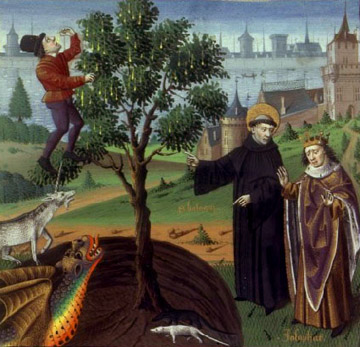I visited some Buddhist temples during a recent brief visit to Thailand, and this led me to reflect on the differences between Buddhism and Christianity (see previous post) but also on the similarities.
I noticed that large statues of the Buddha tended to have a smaller Buddha sitting in front of them. I assume (perhaps wrongly) that the smaller Buddha represents the historical Siddharta Gautama, while the larger figure represents the universal spiritual state which he is supposed to have attained. It struck me that this relationship was not entirely from different from the relationship in Christian theology between Jesus and God. And there are other parallels. Both religions have a tradition of celibate monasticism. Each bears a similar relationship to a parent religion (Hinduism and Judaism respectively).
I wondered if it was possible that Buddhism, as the older of the two by several centuries, might have had a direct influence on the formation of Christianity. It’s not implausible, given that both Palestine and Northern India were within the sphere of influence of Hellenistic culture. (Idea for a historical novel: a bright young Jewish man in Nazareth in Roman-occupied Palestine, hears about Buddhism from an Indo-Greek soldier in the Roman army, and decides to try and do something similar).
Anyway, when I was looking up possible connections, I came across (in wonderful Wikipedia) one particular connection which I had never heard of before: the story of Barlaam and Josaphat. This story was originally about the early life of Gautama Buddha, but ended up as a popular story in Medieval Europe, when both characters were regarded as Christian saints by Catholics and Orthodox Christians alike . The name Josaphat comes, apparently, from the Sanskrit Bodhisattva, successfully modified as the story was retold and retold first in Persian (Bodisav), Arabic (Budhasaf then Yudasaf), Georgian (Iodasaph), Greek (Ioasaph) and finally Latin.
I find it rather delightful that the founder of one religion can find himself a saint in another. I find it delightful too that a story can itself have a story, making its way slowly from Asia to Europe, and from the Buddhist world, to the Islamic world, and on into the Christian one, passing from language to language, and changing all the while to meet the needs of its new hosts.
